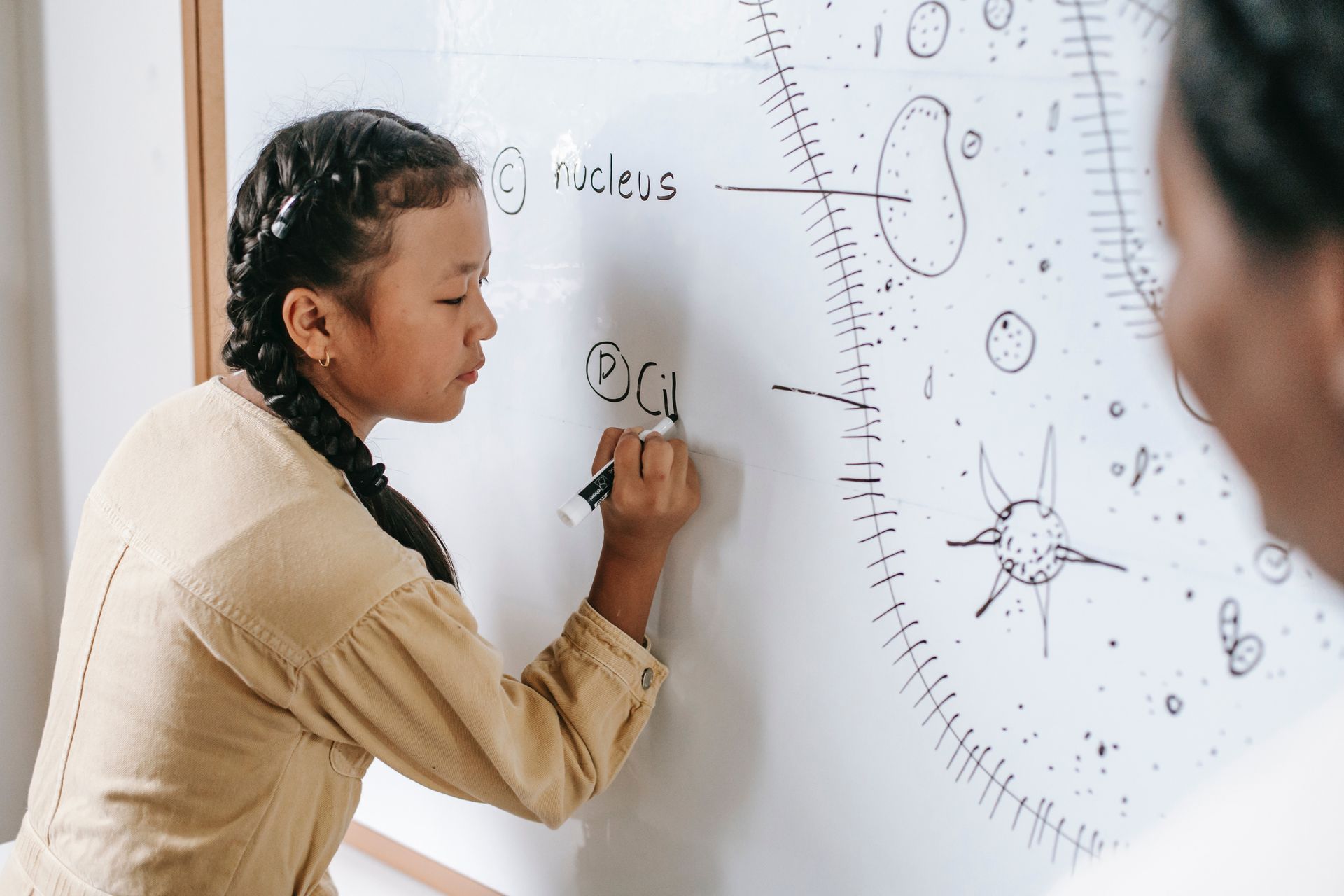OUR METHODOLOGY
The three key pillars of our powerful teaching methodology are CREATIVE PROBLEM SOLVING, CRITICAL THINKING and MATHEMATICAL REASONING. These pillars help our students gain an instant edge in their current grades while building critical life skills which will give them a lasting foundation for their continued learning in their life ahead.
CREATIVE PROBLEM SOLVING
is an important skill in mathematics, science, and language arts.
It involves thinking outside the box and finding innovative solutions to problems.
In mathematics,
creative problem solving can involve finding alternative approaches to solving a problem or using creative thinking to tackle complex mathematical concepts. For example, a student may use a visual aid or a real-world example to help understand a difficult algebraic concept.
In science,
creative problem solving can involve developing new hypotheses or designing experiments to test them. Students may use critical thinking skills to analyze data and draw conclusions from their observations.
In language arts,
creative problem solving can involve developing creative writing skills or finding unique ways to analyze and interpret literary works. For example, a student may use symbolism or metaphor to express their ideas in a creative way or use a novel approach to interpreting a piece of literature.
Some specific strategies we use for promoting
creative problem solving include:
Promote brainstorming, generating ideas, and uninhibited creative thought exploration.
Foster teamwork, collaboration, idea-sharing, and inclusive group discussions.
Utilize open-ended inquiries to stimulate critical thinking and analysis.
Offer chances for students to apply knowledge in real-world contexts.
Support experimentation, risk-taking, and embracing unconventional approaches.
Give process-oriented feedback, valuing problem-solving steps, not just outcomes.
By promoting creative problem-solving skills, students can become more effective problem solvers and critical thinkers, which can help them succeed in their academic and professional lives.
CRITICAL THINKING
is a crucial skill in mathematics, science, and language arts. It involves analyzing information,
evaluating arguments, and making reasoned judgments based on evidence.
In mathematics,
critical thinking can involve analyzing mathematical problems to identify patterns and relationships, using logic to draw conclusions, and evaluating mathematical arguments for validity. For example, a student may analyze a mathematical proof to determine if it is logically sound.
In science,
critical thinking can involve analyzing scientific data to identify patterns and relationships, evaluating scientific claims based on evidence, and designing experiments to test hypotheses. Students may use critical thinking skills to identify flaws in scientific arguments or to identify alternative explanations for scientific phenomena.
In language arts,
critical thinking can involve analyzing literary texts to identify themes and symbols, evaluating arguments presented in persuasive writing, and synthesizing information from multiple sources to draw conclusions. For example, a student may analyze a piece of persuasive writing to determine if the author presents a logical argument supported by evidence.
Some specific strategies we use for promoting
critical thinking in these subjects include:
Encourage questioning, challenging assumptions, and fostering inquiry-driven learning experiences.
Offer opportunities to analyze, scrutinize evidence, and draw logical conclusions.
Inspire students to evaluate argument validity and identify reasoning flaws.
Facilitate real-world problem applications for honing critical thinking abilities.
Urge consideration of alternative perspectives and creative, divergent thinking.
Emphasize evidence-based reasoning importance through constructive feedback provision.
By promoting critical thinking skills in these subjects, students can become more effective problem solvers and decision-makers, which can help them succeed in their academic and professional lives.
MATHEMATICAL REASONING
is a fundamental aspect of both mathematics and science. It refers to the process of using logic
and mathematical concepts to understand and solve problems. Mathematical reasoning involves a combination of
deductive and inductive reasoning, as well as critical thinking skills.
In mathematics,
mathematical reasoning is used to prove theorems and solve problems. It involves starting with a set of axioms or assumptions, and then using logical arguments to arrive at a conclusion. The ability to reason mathematically is essential for success in fields such as engineering, physics, and computer science.
In science,
mathematical reasoning is used to describe and model natural phenomena. It is used to make predictions about the behavior of systems, and to test hypotheses through experimentation. Scientists use mathematical reasoning to develop theories and explain observations.
In language arts,
Mathematical reasoning is also closely related to other areas of study, such as statistics, probability, and geometry. It is an important skill for decision-making, problem-solving, and critical thinking in a wide range of contexts.
Some specific strategies we use for promoting
creative problem solving include:
Foster curiosity, encourage questioning, and explore concepts.
Apply problem-solving techniques in varied contexts.
Teach visualization techniques to simplify problems.
Encourage collaboration, group discussions, and sharing.
Connect abstract concepts to real-world examples.
Develop mental math
skills for efficiency.
Overall, mathematical reasoning is a powerful tool for understanding and explaining the world around us and is essential for success in many fields of study and work.





